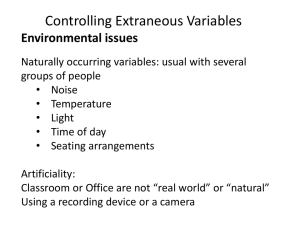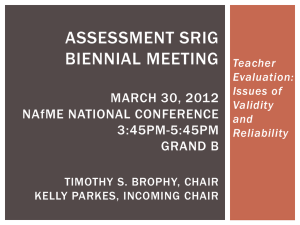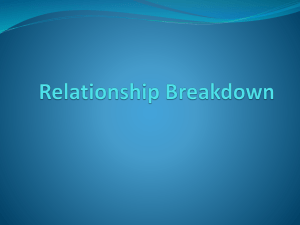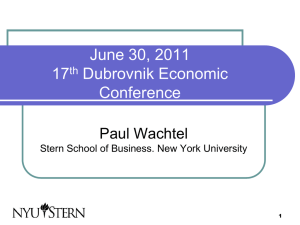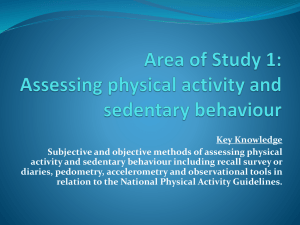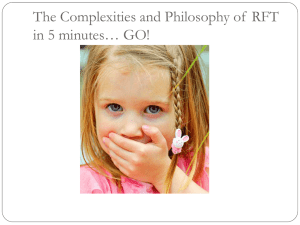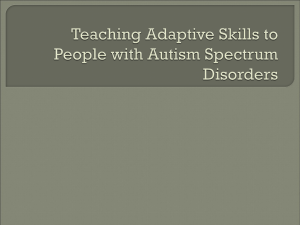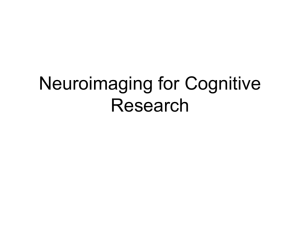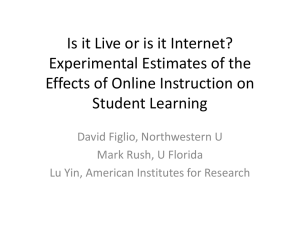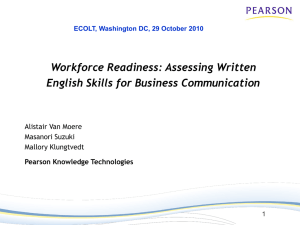Example Group Presentation
advertisement
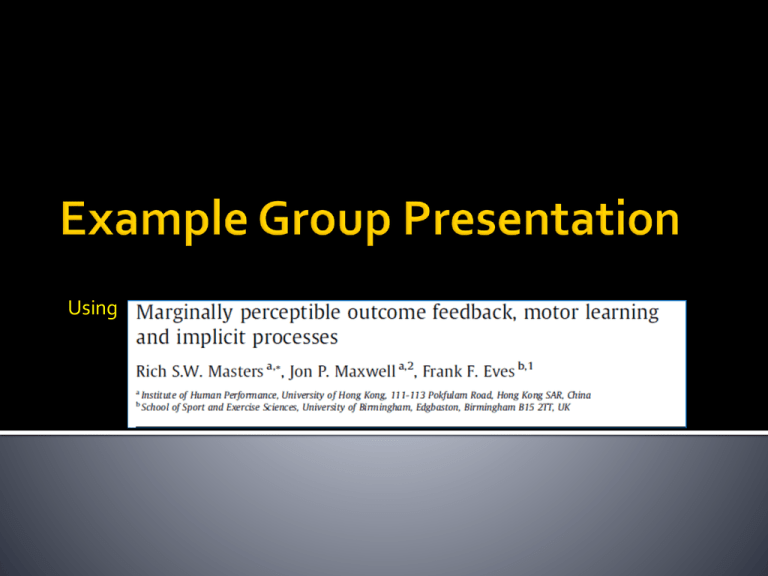
Using Purpose ▪ What question were the authors trying to answer? ▪ What was the primary relationship being studied? Methods ▪ Subtitles: Participants; Task/Apparatus; Procedure ▪ How did they get their sample? How many participants (ages, gender; ethnicity, etc...)? What equipment was used? What was the design? What did participants do? Results ▪ What did they find? Did they support their hypothesis? Brief details: Practice golf putt 500 times 2. Feedback at a. supraliminal; b. subjective; c. objective thresholds (speed of exposure controlled) 3. Does putting improve? Do they gather declarative knowledge? 1. Expectations: Objective threshold: no improvement; no rule learning. Subjective threshold: improvement; no rule learning Supraliminal threshold: improvement & rule learning Participants 48 with normal/corrected vision Mean age 20.4 years, range 19-35 years All had never played golf Task/Apparatus Golf putter, putting green (indoor, artificial) Target circle (45cm diameter) 2.7 m from P Curtain raised 8cm above ground, 1m from P, prevented vision of putting surface Liquid crystal glasses occluded vision of ball after contact with putter (remained opaque 300ms) Feedback presented via tachistoscope Procedure Phase 1 – threshold detection ▪ A. Fixation slide (5ooms); B. Stimulus slide (varied timings); C. Pattern mask (500ms) ▪ Stimulus starts at 100ms, reduces ▪ Stimuli presented in blocks of 20 ▪ P had to identify the location of dot ▪ Confidence of ID taken at end of block ▪ “I was completely guessing” (20% chance) to “confident” (100%) ▪ Objective threshold (in ms) reached when success level dropped to 20% Procedure Phase 1 – threshold detection ▪ Subjective threshold achieved by raising stimulus presentation time ▪ Subjective confidence still at 20%, but response accuracy greater than 20% = subjective threshold Phase 2 – motor learning ▪ Randomly assigned to feedback condition ▪ Putt 500x Procedure Phase 2 – motor learning ▪ After every putt: ▪ ▪ ▪ ▪ 300ms blocked view look into tachistoscope Fixation slide (500ms) Feedback slide (duration varied depending on feedback condition) ▪ Pattern mask (500ms) ▪ Say where they think the “ball” appeared ▪ After every 100 putts: ▪ Confidence of accuracy – 20% to 100% Procedure At end of phase 2, P’s reported any rules, methods or techniques used. 50 trial transfer test (normal vision to same target). Feedback awareness Putting accuracy NB: no difference in number of rules was found, though supraliminal (M = 1.76) tended to have more than the other 2 conditions (M’s = .76, .80) What were the main independent and dependent variables in the study? Dependent: ▪ putting accuracy; stimulus id confidence; stimulus id accuracy; number of rules reported Independent: ▪ Feedback condition (level of consciousness of feedback) What was/were the relationship(s) of interest in the study? Can motor learning proceed with feedback presented at subliminal levels? What were the main hypotheses in the study (if any)? Did the researchers support their hypotheses? That motor learning would only be possible in 2 of the conditions (supraliminal, subjective) ▪ supported That declarative knowledge would only be accrued in one condition (supraliminal) ▪ Not supported (none showed declarative knowledge) How good is the external validity of the study? (use the guiding questions) To what places/settings/people/times are they generalizing? ▪ All people? Outside lab? Age? Task? Stimulus type? Type of sense? Availability of immediate other feedback (proprioception tied with vision) ▪ These are all potential “moderators” of the effect...discuss to evaluate EV ▪ Sampling strategy seems to be volunteers, probably students (kinesiology students?) Key question: Does the role of consciousness of feedback in learning differ for any of these moderators when comparing the value used within the study to that not used in the study? ▪ E.g. Does the role of consciousness of feedback in learning remain the same when the sensory feedback is disrupted and simplified (as in the study), and when it is in its “natural” state? ▪ This is brief – you should go into more detail How good is the construct validity of the study? (use the guiding questions) Constructs: ▪ Putting accuracy ▪ Measured using % balls stopping in target circle ▪ Pretty crude ▪ But the results showed the expected outcome – could this crudeness have changed the results of the study? ▪ Possibly – differences between supraliminal and subjective threshold groups may have been found with better DV. How good is the construct validity of the study? (use the guiding questions) Constructs: ▪ Stimulus identification accuracy. ▪ Intended to assess the degree to which people can correctly identify a stimulus. ▪ Assessed by # of correct IDs per set of 100 trials. ▪ Has face validity...and perhaps some criterion validity in as much as it behaved the way it was supposed to. How good is the construct validity of the study? (use the guiding questions) Constructs: ▪ Stimulus identification confidence. ▪ Intended to assess the degree to which people are confident they have correctly identified a stimulus. ▪ Assessed by one measure of confidence per set of 100 trials. ▪ Has face validity...and perhaps some criterion validity in as much as it behaved the way it was supposed to. ▪ But one measure every 100 trials? Might the ones they were more confident on be the trials they identified more accurately? ▪ If so, this would change the interpretation of the study’s meaning entirely. ▪ Could be asked every time – better. How good is the construct validity of the study? (use the guiding questions) Constructs: ▪ Number of rules reported. ▪ Intended to assess accumulation of declarative knowledge. ▪ Assessed after phase 2 (motor learning) but before transfer. ▪ Seems crude...only measured once, allows for forgetting (learning phase 500 trials) ▪ Are there better alternatives? Has it worked elsewhere? ▪ Asking more frequently (within practice) would increase declarative consideration – could harm the experiment. ▪ But still might change the outcome of that part of the experiment? But has been used successfully in many other studies. Perhaps the groups really didn’t acquire any knowledge (this is what the authors think) ▪ Type of feedback ▪ Intended to present feedback either with or without awareness, such that the participant either can or cannot use the information ▪ All of phase one used operationalize this construct ▪ Has both face and content validity ▪ Also has some criterion validity, as they showed data of the awareness and accuracy of the subjective judgments ▪ What about the unnatural environment in which the feedback was presented? (subjects never actually saw the ball) Could the unnatural feedback type (extrinsic to the task, rather then integrated with other senses) have altered its salience in some way? ▪ One weakness is in potential for group averages to mislead. Could the increased performance of the subjective threshold group be because they were occasionally conscious of the stimulus, rather than that they were continually unconscious of it? Would change the interpretation of the results, rather than the results themselves. How good is the internal validity of the study? (use the guiding questions) Design O O O R R R X1 X2 X3 Op Op Op OT OT OT Use of random assignment and multiple groups suggests only social threats (and 1 or 2 others) remain. Unlikely that mortality played a part – no drop outs reported Can’t see how social threats relevant – all tested individually Experimenter bias? Internal validity quite good.

